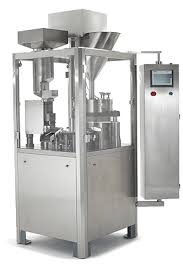A Simple Way to Decay, the Importance of Maintenance
To keep up this performance and guarantee a lower downtime and a machine lasting for more time, it is essential to take care of your blister packing machine. Routine and preventative maintenance keeps unexpected breakdowns at bay, as well as maintains the machine in a condition that it should also be in its maximum performance.
Checks you need to make every day and every week
Before you even turn your machine on for the day Check your machine visually. Inspect seal areas and blade edges for any signs of wear or damage. Make sure the materials have no leftovers that may affect the machine.
Cleaning Procedures: To clean the machine, remove dust, debris, and product residue every day. Use only recommended cleaning agents, and comply with manufacturer guidelines to avoid damage to sensitive parts.
Lubrication - Regularly check and lubricate moving parts for smooth operation (weekly). Avoid over-lubrication or improper selection of lubricants and use only those recommended by the manufacturer of the machine.

Monthly and Quarterly Maintenance Schedules
Electrical Systems: you should check the electrical connections and wiring once a month. Check for bare wires and chilling connections that will cause breakdowns of an electrical nature.
Update Software: Make sure to update the software for any machine with software controls as the manufacturer recommends. These updates can patch bugs, enhance performance, and even provide new features to the device.
Sensor/ Control Calibration : Sensor and control calibrations can be undertaken regularly to ensure accuracy. This is particularly important for machines that also do delicate work like dose control, or placing something in a specific spot.
Replacement of Parts and Repair of Equipment
Spare Parts Inventory : Maintain an inventory of crucial spare parts, as recommended by the equipment manufacturer and past consumption patterns. Seals, cutter blades, and forming dies are common examples of spare parts.
Professional Maintenance: Plan for professional maintenance to be done regularly, at least once a year. This enables a more detailed inspection and easier replacement of parts that are impossible to reach during routine inspections.
Training and Documentation
Operator Training: How to Make Sure that everyone knows how to Correctly Use and Basic Service the Blister Packing Machine. Having operators that are properly trained means that issues are likely going to be identified earlier, mitigating large scale failures.
Keep Records - Inspect and Test: Keep detailed records of all maintenance activities. This documentation ensures that maintenance history is tracked on the machine, future maintenance is properly planned out, and troubleshooting repeatable issues is done more effectively.
Key Takeaways
Keeping your blister packing machine efficient requires routine inspection, cleaning, lubrication, and other upgrades in place. Ensuring that any such practices are upheld greatly improves the reliability and overall lifespan of the machine. Always keep in mind, believed the key to hold the machinery for long life is with the properly planned and immediate response to any upcoming menace.